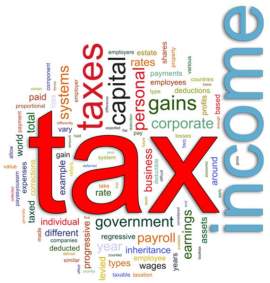
Statistics and Trends of Property Taxes

The ad valorem tax and the long term effects it imposes vary based on rates, levels of annual increases, and inflation. The sheer numbers cannot be calculated in terms of a direct yearly effect on one's wallet or bank account, but instead, must be analyzed over time to exemplify the true nature of such a tax. The ad valorem tax substantially deviates from state to state, but the strategies imposed, such as tax caps or yearly increases do not fluctuate in regards to their long term effects.
The property tax is levied by local and state governments, as a result, the amounts and models imposed differentiate throughout the nation. That being said, the statistics and trends listed below will help one better understand the effects of the ad valorem tax, the benefits or costs it imposes, and the relationship between property value, income, and the amount of tax levied.
Examples of disparity between State property tax rates, income, and home values:
Alabama-Home Value-$121,500
Average yearly property tax-$383.00
Average Income-$52,843
Percent of Home Value-.32%
Percent of Income-.72%
California-Home Value-$467,000
Average yearly property tax-$2,890
Average Income-$81,757
Percent of Home Value-0.61%
Percent of Income-3.46%
New Jersey-Home Value-$364,000
Average yearly property tax-$6,320
Average Income-$90,340
Percent of Home Value-1.74%
Percent of Income-7.02%
The above examples represent the drastic differences between a state's ad valorem tax. California represents the median property tax levels, while New Jersey and Alabama are the outliers-New Jersey currently has the highest ad valorem tax in the nation while Alabama has the 49th highest property tax rate (only Mississippi has lower rates.) What makes New Jersey's ad valorem tax so much higher than Alabama's? Why are the percentages so drastically different?
There are two chief reasons to explain the severe differences in property tax between Alabama and New Jersey. The first, and most substantial reason revolves around location. New Jersey, like many areas close to New York City are densely populated and thought to be desired areas to own property.
A study done by the New York Times concluded that the property tax increased three times faster than incomes in the suburbs surrounding New York City. New Jersey has failed to put an effective property tax cap on its municipalities; the ad volerm tax has been known to increase 50% for particular communities in a three year time span.
New Jersey's exorbitant property tax also stems from sheer necessity or reliance. The state has 566 towns or cities that choose to fund their own school systems, law enforcements, and other public services. Instead of consolidating such costs, each locality is forced to tax its citizens to the highest extent to maintain and offer these particular services.
Drastic booms in population also can greatly increase a localitie's property tax rate. Between 1980 and 2000, many counties in new Jersey experienced population increases of 40-50%.
When the population increases, public services must proportionately rise to supply the growing community's needs. New schools must be built to accommodate the increased population; these new schools must be supplied with buses, teachers, utilities, athletic departments, supplies etc.
More people in a community will lead to an increased demand for roads, and law enforcement. These goods are paid for directly through property tax revenues. Revenues and costs are both proportional to income; when a society grows, public services must proportionately grow as well.
States with low property tax rates like Alabama, commonly possess low population densities, less desirable plots of land, and a lower average income. Communities that are less densely populated contain less municipalities; the need for property tax revenue as a means to provide for public goods is not a strong need.
Towns in these states also tend to pool their resources, students from different towns go to 1 centralized school, and each town does not typically have its own specific police department. These variables and economic factors can greatly influence a communitie's tax rate, but if analyzed, an ad valorem tax will become comprehensible based on the varying needs and population breakdown of an individual community.



















